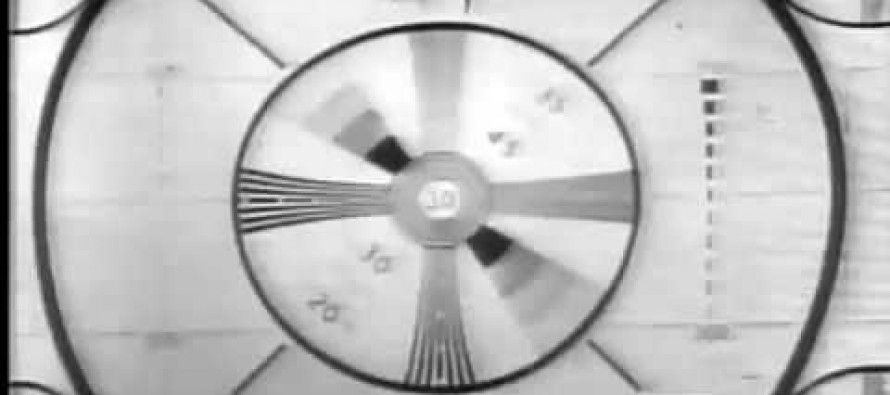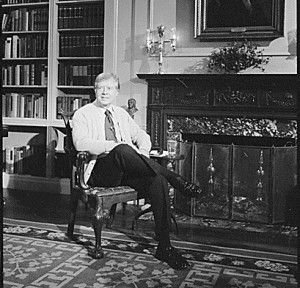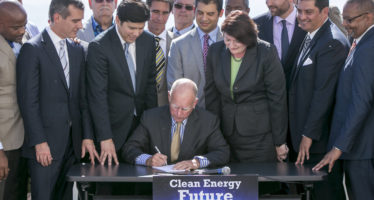The Thermostat Nanny

Jan. 18, 2010
By JOHN SEILER
 On Feb. 2, 1977, two weeks after his inauguration, President Jimmy Carter gave a national address wearing a cardigan sweater. It was a winter of record cold across America and the country was suffering through an energy crisis (caused mainly by price controls; the crisis passed in 1981 when new President Ronald Reagan ended the controls).
On Feb. 2, 1977, two weeks after his inauguration, President Jimmy Carter gave a national address wearing a cardigan sweater. It was a winter of record cold across America and the country was suffering through an energy crisis (caused mainly by price controls; the crisis passed in 1981 when new President Ronald Reagan ended the controls).
In 1977, the big chill seemed to fulfill Time magazine’s question of three years earlier, “Another Ice Age?” The president asked Americans to turn down their thermostats to save energy.
At least Carter’s program was voluntary. That may not be the case for a new thermostat regulation system that could be implemented in California, this time to combat “global warming.”
It’s called the programmable communicating thermostat (PCT). It allows the utility company, or potentially the government, to directly control the thermostat in your home through radio communication. Reported the New York Times two years ago, “Pacific Gas and Electric, the major utility in Northern California, already has a pilot program in Stockton that allows customers to choose to have their air-conditioning systems attached to a radio-controlled device to reduce use during periods when electricity rates are at their peak.” In return for allowing the devices on this pilot program, consumers get a discount.
There also was an attempt to make the voluntary program mandatory. In November 2007, the California Energy Commission released proposed standards (.pdf) that, in typical bureaucratese, mandated in Section 112(c):
Thermostats. All unitary heating and/or cooling systems including heat pumps that are not controlled by a central energy management control system (EMCS) shall have a Programmable Communicating Thermostat (PCT) that is certified by the manufacturer to the Energy Commission to meet the requirements of Subsections 112(c)(1) and 112(c)(2) below….
Call it the Thermostat Nanny.
Fortunately, citizen outrage, led by blogger ridicule, forced the commission to cancel the mandate – for now. Reported the San Francisco Chronicle on Jan. 17, 2008:
After a public outcry, commission officials last week said the regulation would be revised so that the devices would still be required, but configured so that customers could override outside control by utilities.
But the agency backed off even more this week by announcing that the proposed remote-controlled thermostats would be dropped entirely from the 2008 edition of the building-efficiency standards.
“Basically, it won’t materialize for a while, at least in this form,” Robert Michaels told me; he’s a professor of economics at Cal State-Fullerton, co-editor of the peer-reviewed journal Contemporary Economic Policy and an expert in energy policy.
“But sooner or later they will get in through the back door,” he warned.
Outer temperature limits
Joseph Somsel is a degreed nuclear engineer holding an MBA from California Polytechnic University. He compares the new radio-controlled thermostats to the old TV show “The Outer Limits.” (YouTube of the show’s opening theme here).
Somsel’s version:
There is nothing wrong with your thermostat. Do not attempt to adjust the temperature. We are controlling your power consumption. If we wish to make it hotter, we will turn off your air conditioner. If we wish to make it cooler, we will turn off your heater. For the next millennium, sit quietly and we will control your home temperature. We repeat, there is nothing wrong with your thermostat. You are about to participate in a great adventure. You are about to experience the awe and mystery which reaches from the inner mind to… SACRAMENTO!
On a serious note, he told me, “The new meters have begun deployment. PG&E spent (or plans to spend) $1.6 billion on these devices. They can provide real-time pricing, which in economic theory should aid customers in using power when power is cheapest. This is a form of social engineering in that it intends to force behavioral change on the citizenry.
“In the real world, it causes home power bills to skyrocket. Families are hardest hit while singles and two-income couples who aren’t at home during the day benefit.”
He pointed to protests in Fresno over the higher rates charged to consumers. Reported the Fresno Bee on Oct. 20, 2009:
More than 100 people packed a hearing at the Hugh M. Burns State Building in downtown Fresno tonight to vent their frustration with PG&E’s newest metering technology, which customers say has led to unwarranted spikes in utility bills.
Dozens more stood outside the meeting room. Several people held signs that read, “PG&E are a bunch of thieves” and “PUC ripoffs.”
PUC is the Public Utilities Commission, which regulates utility rates.
In 2008, an attempt was made to ensure that the Thermostat Nanny was voluntary. The Legislature, though controlled by liberal Democrats, passed SB1491 by former state Sen. Tom McClintock, R-Thousand Oaks, now a U.S. congressman. It would have prohibited the “Building Standards Commission from adopting any building standard that requires installation of a device that may be controlled remotely by any person or entity other than a building resident.”
But Gov. Arnold Schwarzenegger nixed it, saying in his veto message (.pdf):
This bill is overly broad because it allows existing subscribers to opt-out of a program in which they have already voluntarily entered. This is problematic because it may cause a shortfall in utility demand reduction during periods of electricity peak demand. Load control programs are critical to averting rotating outages as they provide near immediate demand relief when the grid is reaching its capacity limits or if there is localized congestion caused by transmission line failure.
Basically, the governor didn’t want to give up his power as Thermostat Nanny Numero Uno.
Federal Nanny
The Federal Nanny, naturally, also is getting in involved. “The Recovery Act invested $80 billion in clean energy with $4.3 billion going to a wide variety of Smart Grid technologies, research and development, renewable energy generation, energy efficiency, demonstration projects and more,” reported SmartGridNews.com.
It noted that Vice President Biden issued a report saying the package “will provide 104,000 new jobs in the Smart Grid sector alone.”
Not mentioned, of course, is how many jobs will be killed by the taxes and debt needed to pay for the programs.
A 2010 election issue?
The Thermostat Nanny could become an issue in the 2010 campaign at all levels of government, beginning with the race to replace Schwarzenegger. But it also could be an issue in state and federal legislative races.
Will the Thermostat Nanny be fired? Or hired permanently?
An editorial writer with The Orange County Register for 19 years, specializing in California politics, John Seiler is an independent writer. His email: [email protected].
Related Articles
Democrats mostly silent on UC strike amid declining union approval
As public opinion in California turns against labor unions, few Democrat politicians — most of whom rely on union support
SCOTUS could shake CA’s redistricting schemes
A pair of high-profile cases taken up by the Supreme Court could invalidate California’s redistricting system, scrapping citizen-led efforts to free it up
Gov. Brown signs controversial new climate bills
Over staunch opposition on his right, Gov. Jerry Brown signed several new climate bills into law, aiming to keep




